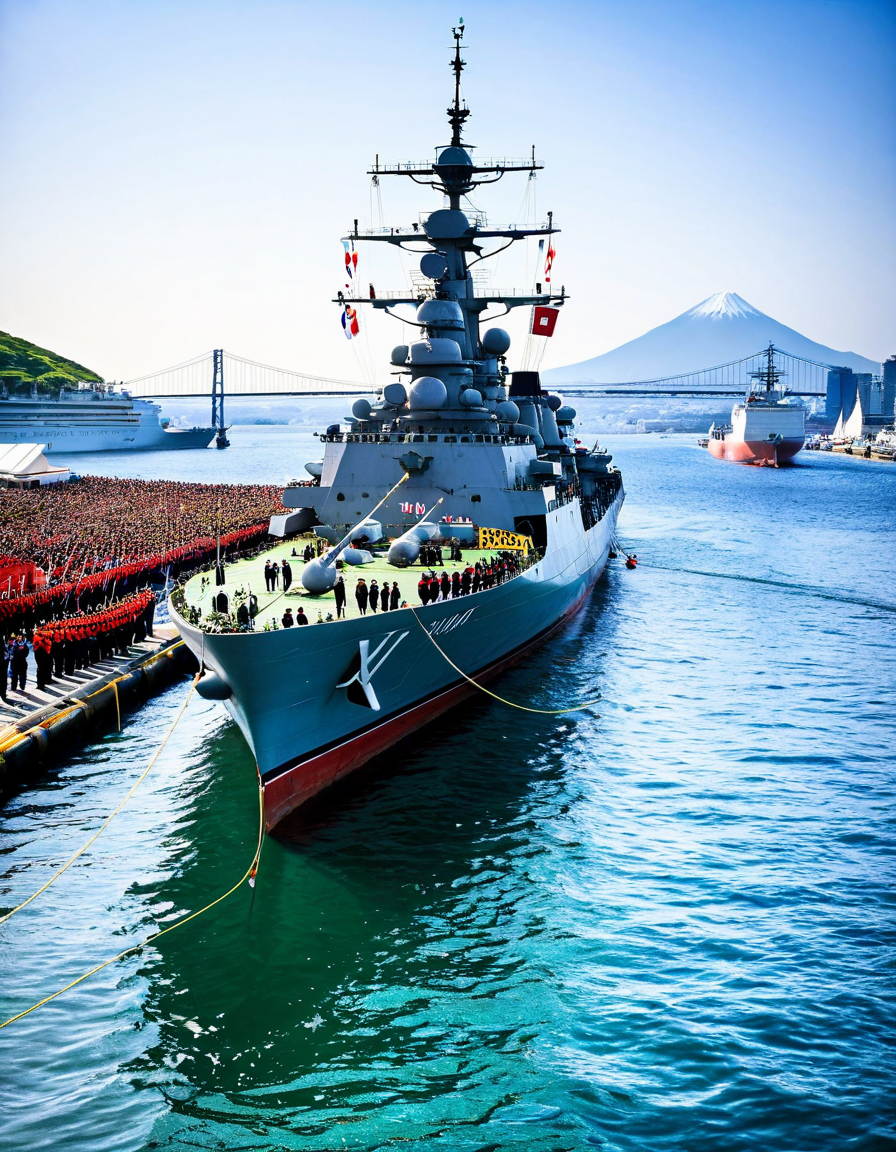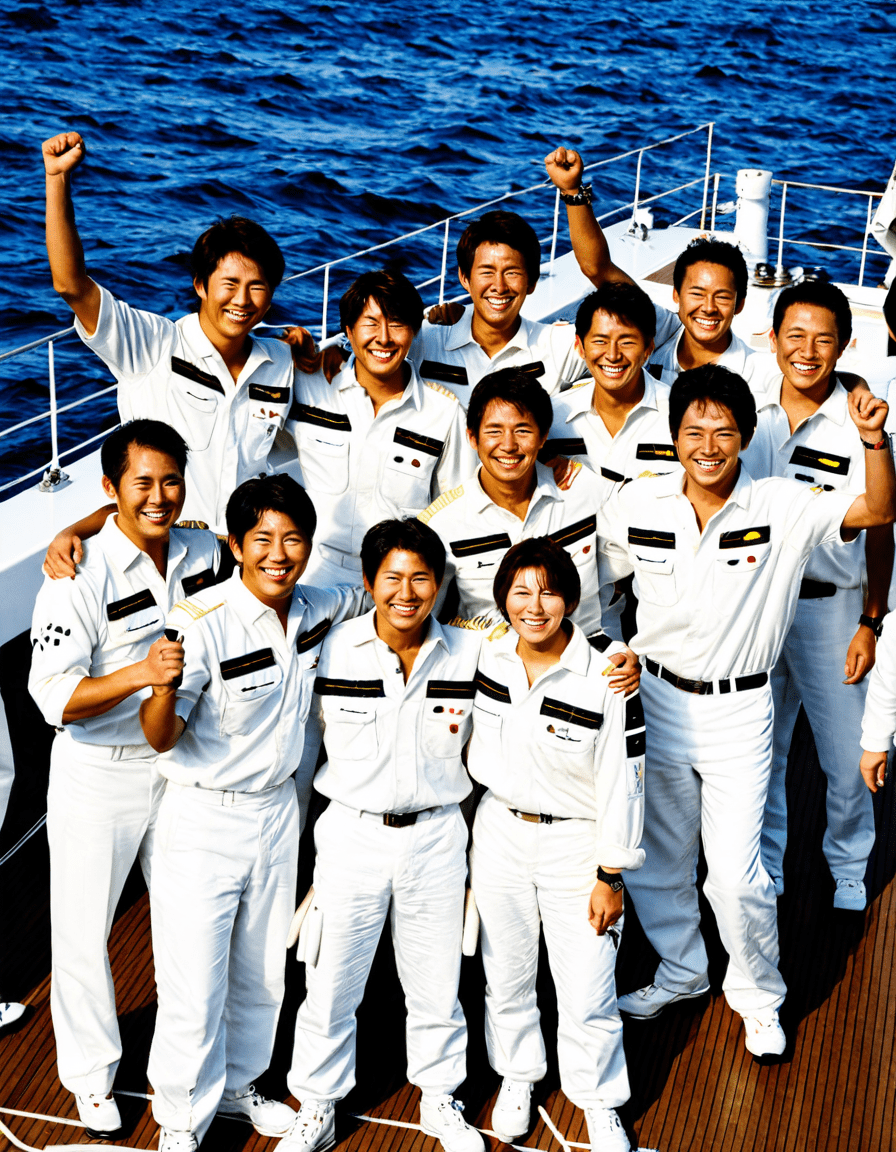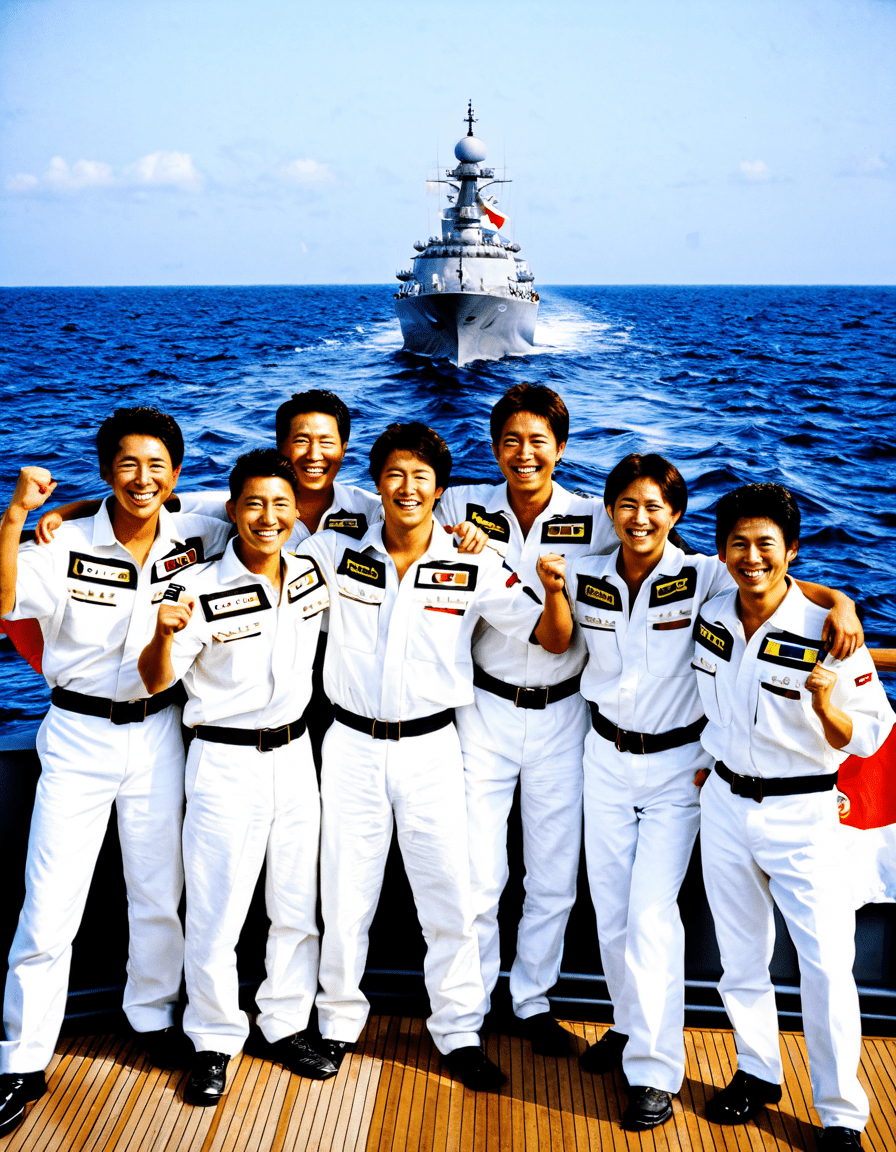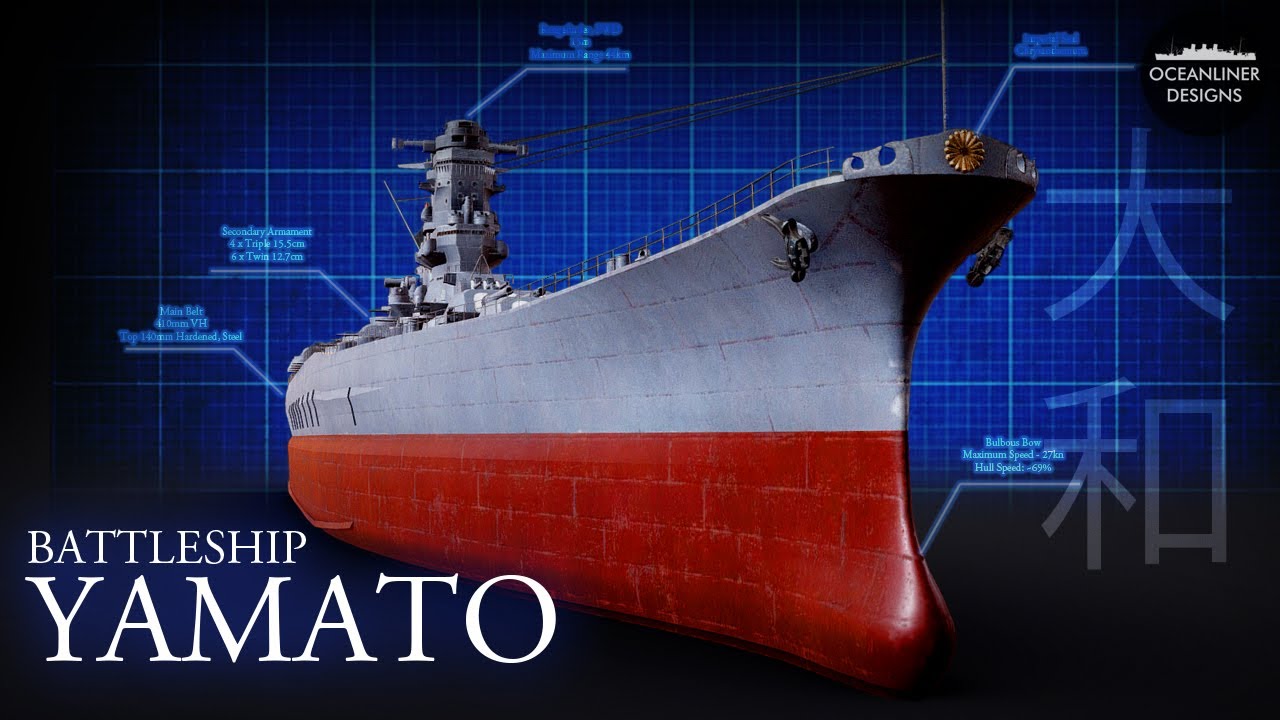The Yamato, a name synonymous with naval grandeur and engineering brilliance, has left an indelible mark on the history of warfare. Commissioned in 1940, the Yamato was not just a battleship; it was a symbol of the Imperial Japanese Navy’s ambitions during World War II. With a staggering displacement of 72,800 tons, it was the largest battleship ever constructed. This engineering marvel showcased innovations in naval armor and gun technology, setting a new standard for maritime warfare. The formidable 18.1-inch guns were a leap forward, influencing global naval artillery designs and provoking strategic dialogues that reverberated well beyond its time.
Yamato’s Design: Engineering Marvel of the Early 20th Century
When you look closely at the Yamato, it’s hard not to be impressed by its massive scale and the intelligence behind its engineering. Designed by Japan’s Imperial Navy, the ship pushed the limits of what battleships could achieve. With advanced armor technology, the Yamato boasted an impressive belt armor that could withstand significant damage, ensuring it was a force to be reckoned with on the high seas. As nations began to rethink war strategies, the innovative features of Yamato’s design became benchmarks across the globe.
Furthermore, the battleship’s remarkable fire control systems improved targeting capabilities that set new accuracy standards. These advancements echoed through shipbuilding techniques around the world, inspiring designs that would lead to modern naval powers embracing similar strategies. Armed with its colossal guns and impenetrable armor, the Yamato stood as the epitome of early 20th-century naval engineering—a lesson that large-scale dominance could shape global military power dynamics.

The Top 5 Historical Battles Involving Yamato
Throughout its brief yet impactful history, the Yamato engaged in several pivotal confrontations that shaped naval warfare.
These battles reveal how the presence of the Yamato reshaped strategies, tested innovations, and ultimately changed the landscape of naval warfare.
The Yamato’s Cultural Legacy: Symbol of National Pride and Military Might
The cultural significance of the Yamato extends well beyond its technological achievements. It became a potent symbol of Japanese nationalism and military might during and after WWII. As narratives surrounding the battleship emerged, the Yamato was immortalized in various media forms, including films like “Yamato” (2005) and anime series like “Space Battleship Yamato.” These representations capture the ship’s status as a national icon, resonating deeply with a sense of pride, sacrifice, and the dire consequences of militarism.
The exploration of the Yamato in popular culture illustrates how it has become woven into the fabric of Japanese identity. Its story serves both as a stark reminder of conflict’s toll and a source of inspiration for future generations. By showcasing valor and ambition, the Yamato has fostered a connection that continues to spark conversations not just in Japan, but around the globe.

The Technological Innovations Sparked by Yamato
The technological advancements associated with the Yamato laid foundations for modern naval capabilities. Its armor technology set significant precedents, with designs mimicking the Yamato’s protective features seen in later naval ships worldwide. The phrase “battleship armor” took on new meaning as future vessels were constructed to withstand ever-evolving threats.
One of its standout features was the innovative fire control systems, which revolutionized targeting accuracy. These developments highlighted the importance of effective communication and precision in naval operations, influencing subsequent designs across global navies. The methodologies introduced with Yamato would echo through the corridors of ship construction, prompting an evolution that still resonates in contemporary naval engineering.
The shipbuilding techniques perfected in the construction of the Yamato not only pushed Japan on the map as a maritime power but also inspired international naval designs that followed. The lessons learned fostered advancements recognized in classes ranging from the American Iowa class to modern destroyers and aircraft carriers.
Yamato’s Influence on Modern Navies
Even today, the principles embedded in the Yamato’s legacy resonate in naval strategies across the globe. Countries like China and India, looking to extend their naval reach, frequently study historical battleships to draw parallels with current maritime strategies. The balance between battleship-heavy fleets and aircraft carriers remains a topic of heated discussion among military strategists.
Moreover, the transition from oversized ships to submarines and carrier groups can be traced back to the strategic lessons learned from the Yamato’s engagements. As modern navies evolve, the wisdom gleaned from the days of Yamato remains relevant, often informing military doctrines and enhancing tactical developments.
Innovative Reflection: Yamato’s Enduring Legacy in Contemporary Context
Examining the impact of Yamato leads to significant reflections on military preparedness, technological progress, and the very essence of national identity. As we dissect its journey from spectacular splendor to eventual demise, we are prompted to contemplate how technological superiority can overshadow the full spectrum of military strategy.
Recent discussions, echoing today’s geopolitical climate, highlight the necessity of remembering the lessons of the Yamato. It’s not simply a lesson about military tactics; it’s a deeper reflection on the ethical implications of power, sacrifice, and responsibility—concerns that resonate through generations. Just as nations grapple with rising tensions and technological advancements, the legacy of the Yamato stands as a monumental reminder of the importance of balance between power and restraint in an unpredictable world.
In a future where strategic discussions continue to evolve, let’s hope we honor the echoes of the past in our present and future endeavors. The story of the Yamato is not just a tale of a battleship; it’s a lesson that the world needs to remember—about pride, ambition, and the profound costs of conflict.
Yamato: A Legendary Japanese Battleship’s Impact
The Brains Behind Yamato’s Design
Did you know that the battleship Yamato was commissioned in 1941 and famously weighed about 72,000 tons? That’s heavier than many modern-day luxury cruise ships! Its massive size and formidable firepower aimed to demonstrate Japan’s naval prowess. Interestingly enough, this behemoth wasn’t just constructed for warfare. Much like the anticipation surrounding the chiefs game score before a pivotal match, Yamato was expected to be a game changer in the Pacific theater, representing Japan’s might and innovation.
The ship was armed with nine 46 cm (18.1 inch) guns, the largest naval artillery ever put on a ship. To put it in context, these guns could fire shells weighing nearly a ton! Such firepower is reminiscent of blockbusters featuring tough characters, like the ones played by Andrew Bryniarski, who seem larger than life. Yamato was more than just a vessel; it was a floating fortress, intended to dominate its adversaries.
Its Final Voyage
Tragically, Yamato’s operational time was short-lived. On April 7, 1945, during its final mission aimed at defending Okinawa, the ship was sunk by American forces. Imagine the storm that day — the destruction was catastrophic. To draw a parallel, people brace for intense weather on the first day of winter 2025, surrounded by nature’s fury; Yamato faced human firepower in its last moments. Just as mythical stories recount catastrophic endings, Yamato’s legacy is marked by its exceptional yet brief existence.
What many might not realize is how its demise symbolized the end of an era for naval warfare. The ship’s sinking generated a sense of loss, similar to when fans watch their favorite teams tumble in a key match. Think of Rhamondre Stevenson dodging tackles on the field, strategizing every move — Yamato represented such strategy on the water. It taught future generations about the importance of adaptation in military tactics.
The Cultural Impact of Yamato
Yamato’s legacy transcends its battlefield exploits, influencing popular culture in profound ways. The imagery of the ship can be found in various forms, reminiscent of iconic films like National Lampoon’s European Vacation, where epic journeys are dramatized for entertainment. Creators often drew inspiration from this legendary battleship, crafting narratives that encapsulate both valor and tragedy.
Moreover, discussions surrounding historical figures, like famed military strategists or innovative builders, often draw parallels to contemporary figures, including producers like Nathaniel Hackett who shape the entertainment landscape. Just as those in the X Men Apocalypse cast achieved fame through remarkable performances, Yamato remains an enduring emblem of naval engineering and courage.
Yamato’s story reminds us that while technologies and strategies may evolve, the spirit of innovation and resilience lives on in time, much like people seeking the best bank of America CD rates in finance today. The battleship has left an indelible mark, offering lessons that resonate across generations, reminding us that history always leaves room for interpretation and reflection.







